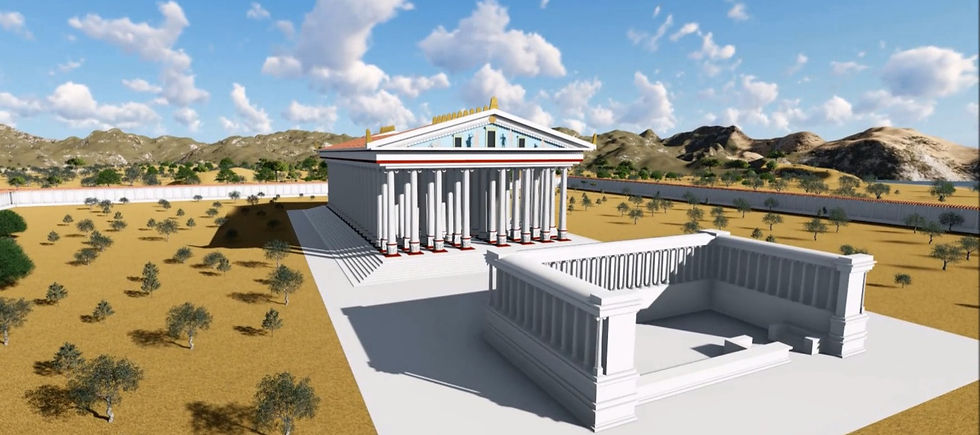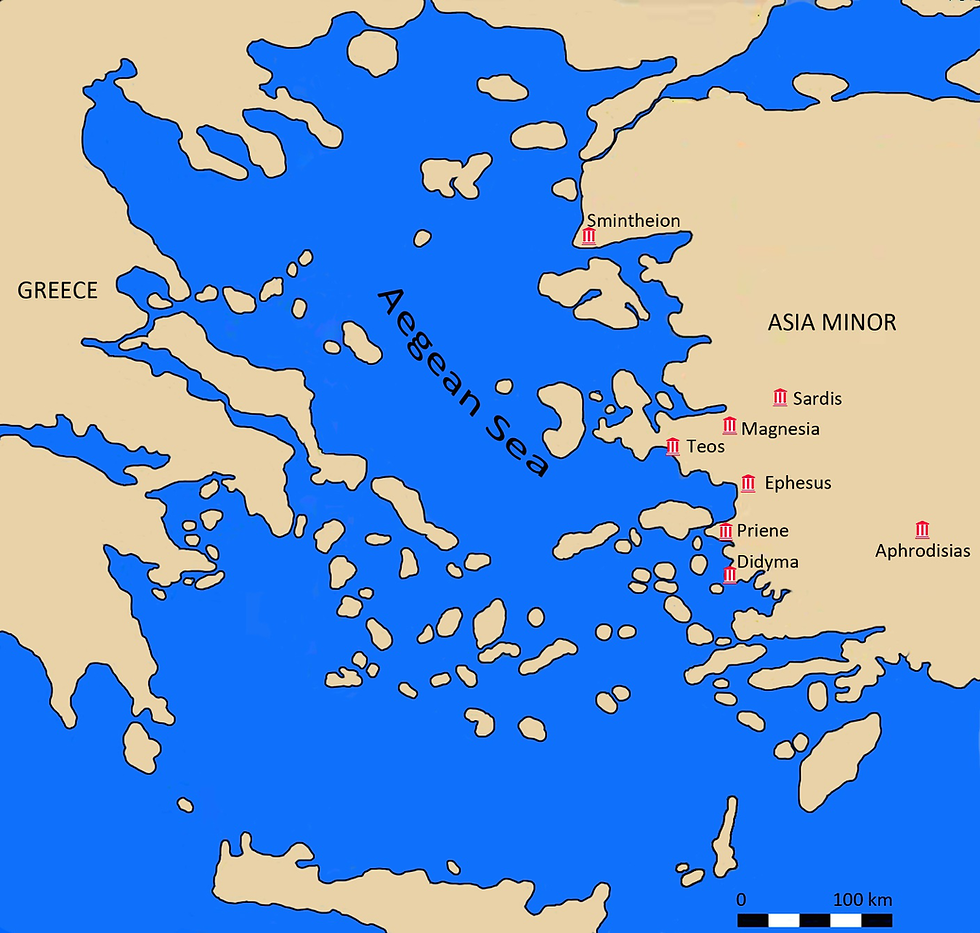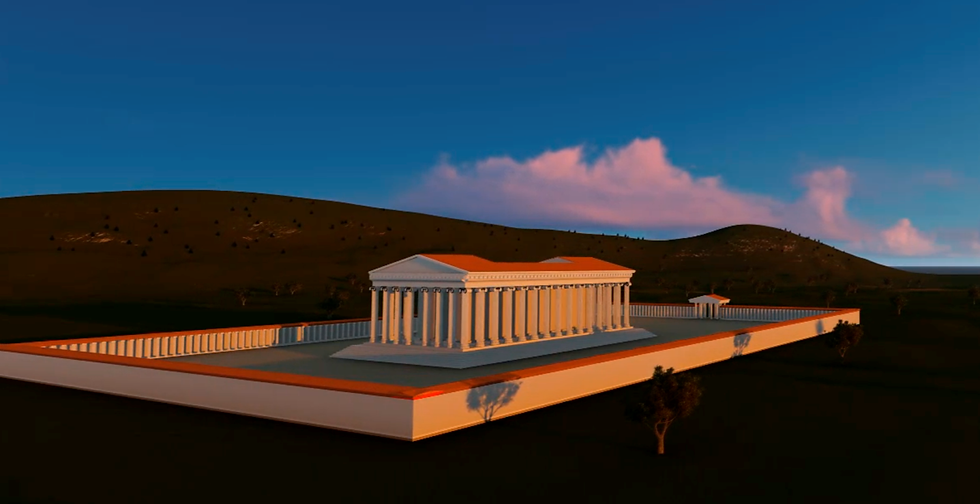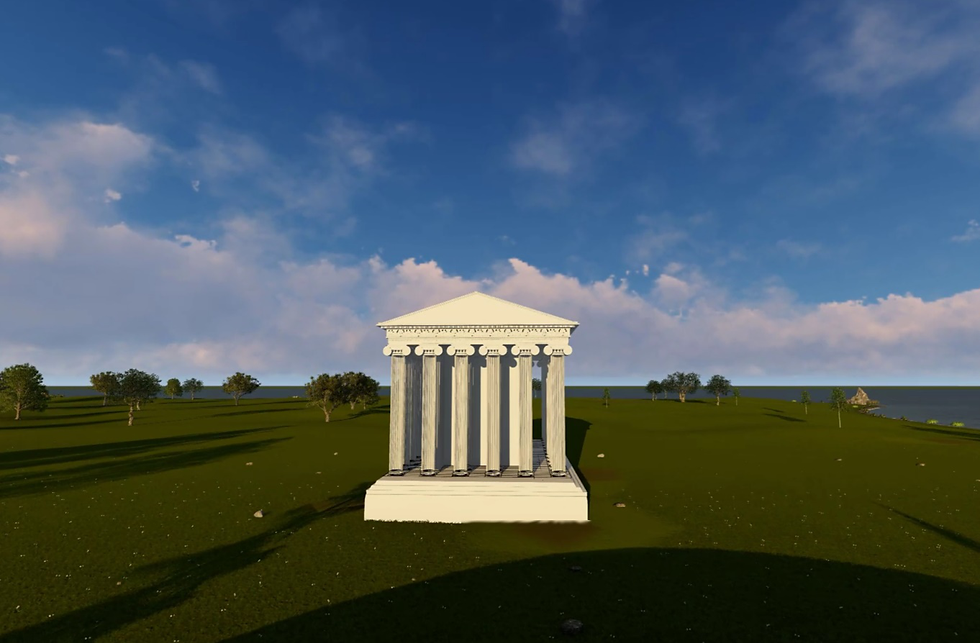



TEMPLES OF IONIA
Eight of the greatest Ionic temples of the ancient world ‘Ionian Eight’ were built on or near the Aegean coast of Turkey, from the dipteros of Chersiphron in Ephesos to the pseudo-dipteroi of Hermogenes in Teos and Magnesia. The temples were the epitome of elegance and splendour, difficult to surpass in terms of architectural achievement for a period of four centuries from 6th century to 2nd century B.C. which spans Archaic, Classical and Hellenistic eras. All of these edifices now lie in ruins. As various empires in the region rose and fell, the temples suffered looting and destruction. Nature also played a part with rivers inundating the temenoses and silting up the archaeological remains, and earthquakes toppling columns and reducing the cellas to rubble. Despite this, tens of hundreds of years after they were built, these marble buildings still tantalise the human imagination. The objective of this project is to present a systematic and comprehensive treatise of the logical procedure of the 3D visualisation of these monuments of the ancient cities of classical antiquity. The virtual reconstruction of the original temples constituted a challenging task and called for an integrated approach to the subject. This is attempted by re-examining central issues and design theories of Ionic temples in light of recent archaeological survey results and with the advent of advances in computer graphics technologies. While the archaeological remains provided some evidence, missing elements required the development of reconstruction hypotheses based on architectural similarities between the various Temples of Ionia. This approach calls for constructive synthesis of designs developed by a range of architects from Theodorus in 6th centruy BC. to Hermogenes in 2nd century BC.
The virtual reality application here is driven by a specific cultural heritage problem: Making the eight lost Ionian temples visible in digital space as they were in their heydays when no other building could compare with them in splendour. ‘Ionian Eight’ provide the researchers with a clear picture of architecture in ancient Ionian cities of the late Archaic, Classical and early Hellenistic periods.
The dipteros which was designed by the pioneering architects of the Temple of Artemis at Ephesus presented a ‘fairy-tale’ splendour to the beholder with its early Ionic ‘forest of columns.’ However, it became obvious during the ensuing centuries that there was no more interest in constructing temples like those. So much could not be spent on sanctuary buildings any more.
The answer to this paradigm shift was given by new pioneering architects in later temples. In complete contrast to the original idea of the ‘forest of columns’ of dipteroi, they broke new ground thereby giving more space and looseness to the Ionic temple design. Porticoes and pteromata have been widened to two inter-axials by removing the inner colonnade. Hidden behind the façade of the dipteros, pseudo-dipteros tied the bonds of the archaic temple building tradition with the renaissance of temple building in Ionia.

From the ancient texts we learn that the beholders used to share a sense of wonder with the sights of the Temples of Ionia. It seems that this response was the consequence of an acquired taste, originating from the cultural and aesthetic values established at a certain epoch of history in a particular geographical location. These temples will never stand again. A few lonely columns remained standing in their sites, a top of them now stork’s nests. They are the forlorn remainders the ‘forest of columns’ there once were. The sanctuaries of Artemis, Apollo, Aphrodite, and Dionysos are gone forever. The sculptures of the deities now dwell in the prominent museums of the world. This lost feat of architecture has been revived in this paper, through the 3D reconstruction of the dipteria and pseudo-dipteria of Aegean Turkey. The 3D reconstruction models in this article are the reconstruction of temples that are neither in full existence nor completely documented; therefore it is inevitable that these reconstructions are complemented by some hypothetical elements whose roles are determined by the degree of uncertainty in the particular building.

The theme of creating digital replicas of the lost Ionic temples of Aegean Turkey has the potential of leading to the most resounding results. Creating, displaying, manipulating, archiving and sharing a digital representation of the form and appearance of a temple constitute one of the most challenging classes of Virtual Reality applications. In combination with immersive technologies, a virtual 3D visit to a temple site can become a very enticing way to study a temple or to experience its cultural site. 3D reconstruction models of these temples contain a wealth of information that can be analysed, tested and improved, because a digital 3D model is editable in both shape and appearance properties.
The virtual rediscovery and visual recovery can never replace or remedy the loss of the temples. It can, however, visually awaken the imagination and provide a hypothesised experience of the temples as well as restoring a sense of the architecture and the place.

Figure 1 The geographical region where the Temples of Ionia had reigned

Figure 2 Ionian Eight

Figure 3 Temple of Artemis (Classical Artemision)

Figure 4 Temple Athena Polias at Priene.

Figure 5 Temple of Apollo at Didyma

Figure 6 Temple of Artemis Leukophryne at Magnesia

Figure 7 Temple of Artemis at Sardis

Figure 8 Temple of Apollo Smintheion at Troas

Figure 9 Temple of Dionysos at Teos

Figure 10 Temple of Aphrodite at Aphrodisias.
